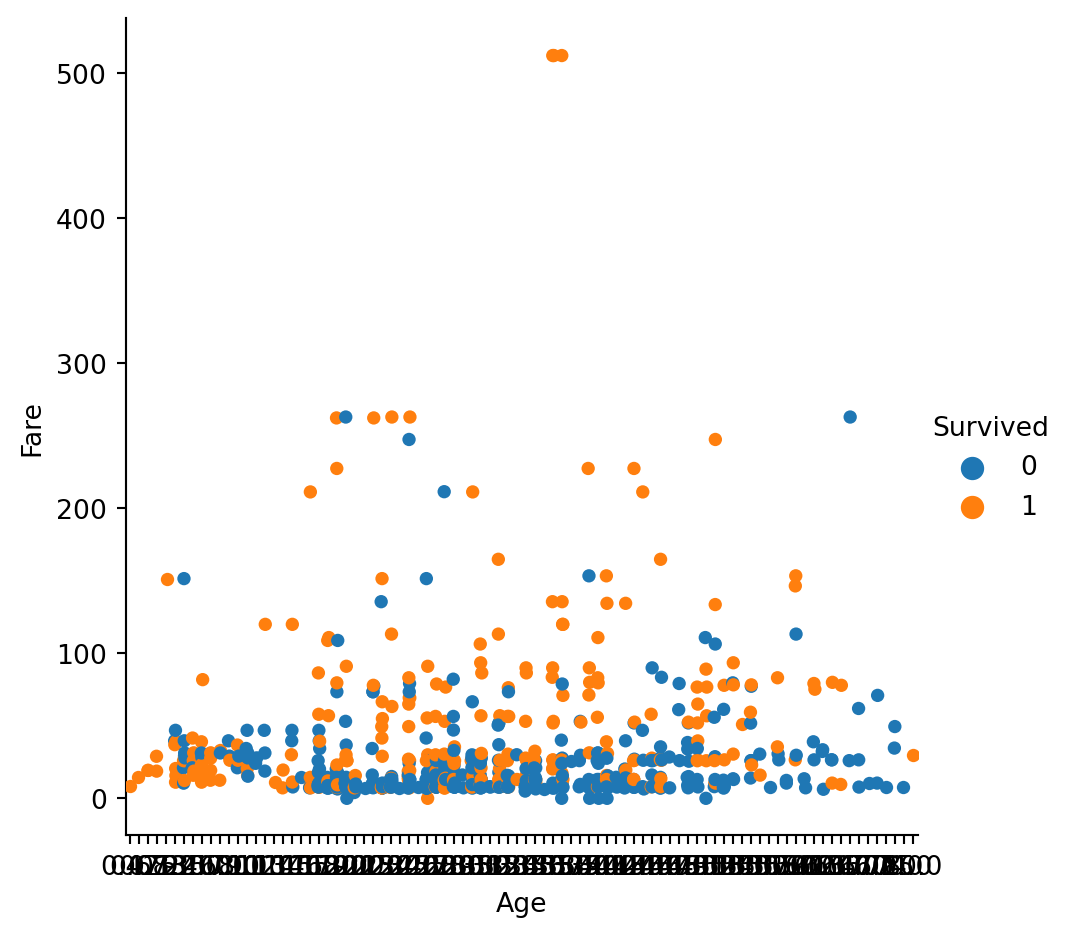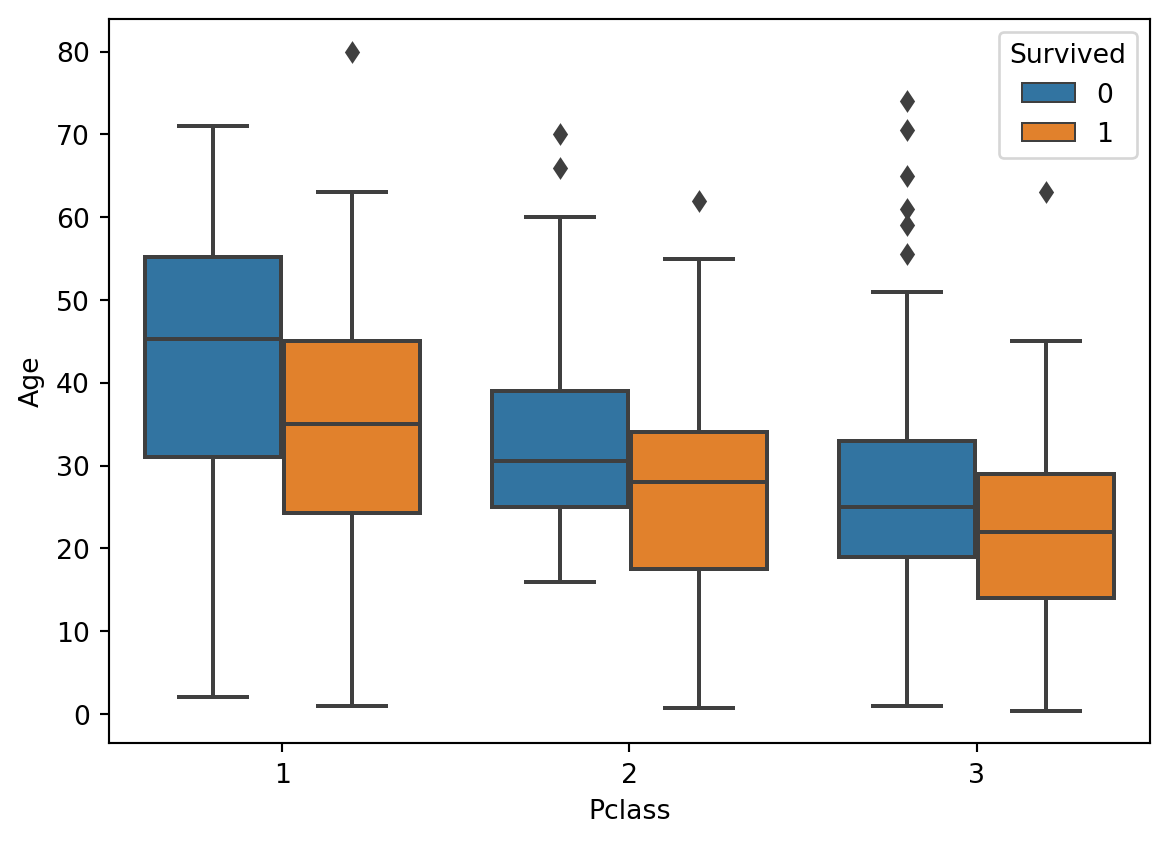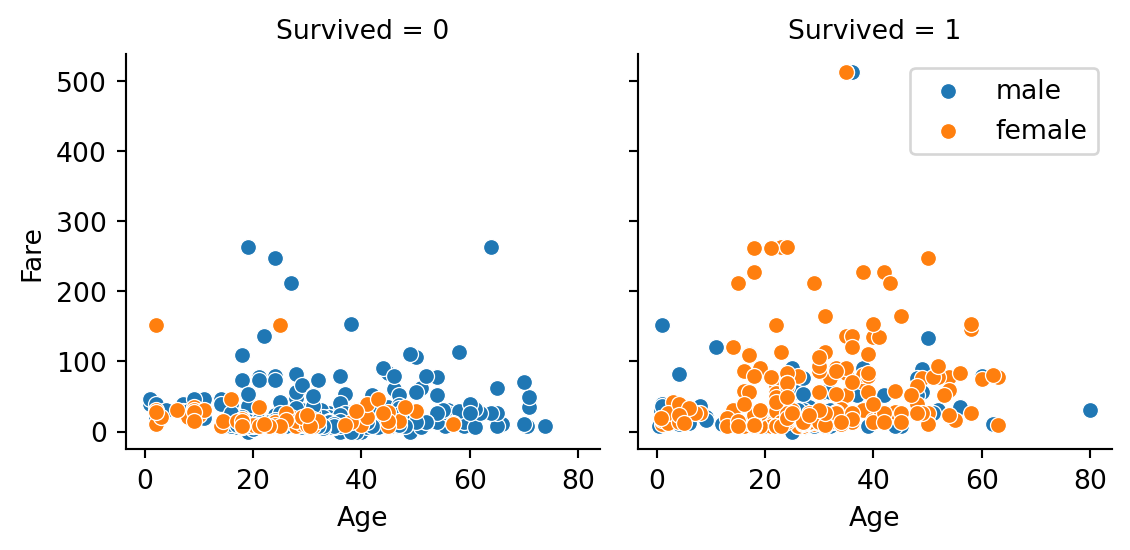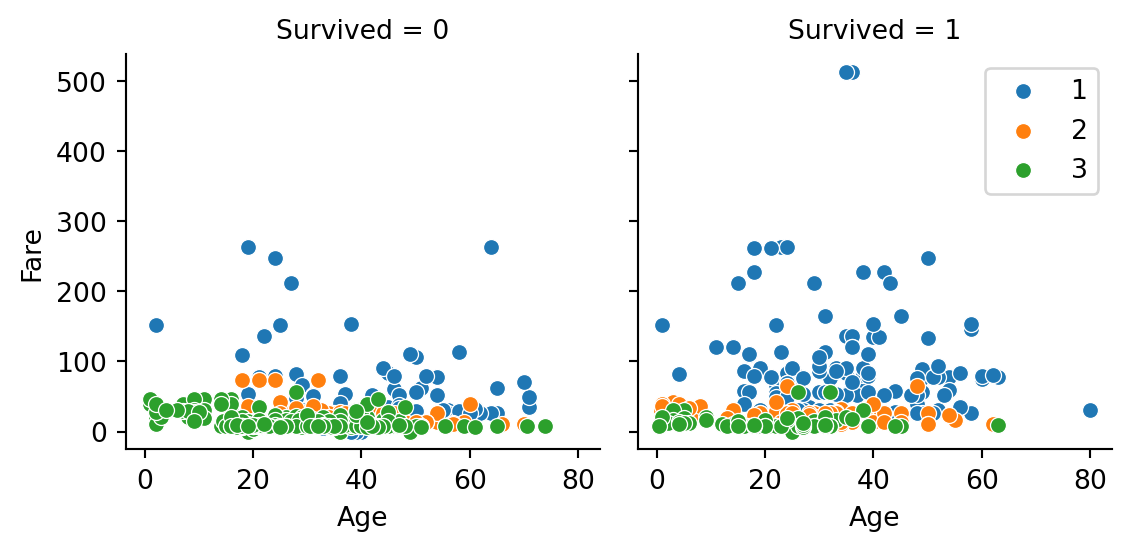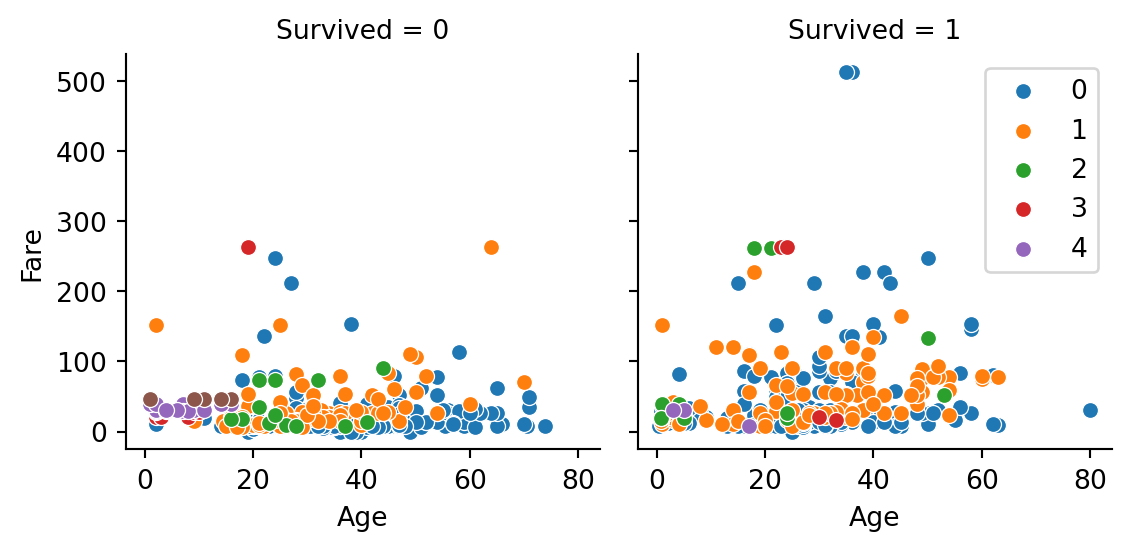Day 4: The Titanic Dataset
Previously I managed to download the titanic zip file using the kaggle api and extract two datasets train and test .
Importing libraries and reading the data
Code
import requestsimport numpy as npimport pandas as pdimport kaggle import zipfile "titanic" , path = "." )= zipfile.ZipFile("titanic.zip" )= pd.read_csv(zf.open ("train.csv" ))= pd.read_csv(zf.open ("test.csv" ))
Rearranging train dataset
Lets see what we have here in the train data
Code
0
1
0
3
Braund, Mr. Owen Harris
male
22.0
1
0
A/5 21171
7.2500
NaN
S
1
2
1
1
Cumings, Mrs. John Bradley (Florence Briggs Th...
female
38.0
1
0
PC 17599
71.2833
C85
C
2
3
1
3
Heikkinen, Miss. Laina
female
26.0
0
0
STON/O2. 3101282
7.9250
NaN
S
3
4
1
1
Futrelle, Mrs. Jacques Heath (Lily May Peel)
female
35.0
1
0
113803
53.1000
C123
S
4
5
0
3
Allen, Mr. William Henry
male
35.0
0
0
373450
8.0500
NaN
S
Checking more details on train columns.
Code
<class 'pandas.core.frame.DataFrame'>
RangeIndex: 891 entries, 0 to 890
Data columns (total 12 columns):
# Column Non-Null Count Dtype
--- ------ -------------- -----
0 PassengerId 891 non-null int64
1 Survived 891 non-null int64
2 Pclass 891 non-null int64
3 Name 891 non-null object
4 Sex 891 non-null object
5 Age 714 non-null float64
6 SibSp 891 non-null int64
7 Parch 891 non-null int64
8 Ticket 891 non-null object
9 Fare 891 non-null float64
10 Cabin 204 non-null object
11 Embarked 889 non-null object
dtypes: float64(2), int64(5), object(5)
memory usage: 83.7+ KB
PassengerID is the unique identifier for each row while Survived is the column to be predicted. Finding only the numeric columns and dropping the above two (ref - this link )
Code
= train.select_dtypes(include= np.number).columns.tolist()del num_col[0 :2 ] #.remove() can remove only 1 item. so for more than 1, use for loop = num_col
Among the string columns, only Sex and Embarked are relevant for our analysis. Ref - selecting columns by intersection
Code
= ["Sex" , "Embarked" , "Survived" ]= train[train.columns.intersection(select_col)]
<class 'pandas.core.frame.DataFrame'>
RangeIndex: 891 entries, 0 to 890
Data columns (total 8 columns):
# Column Non-Null Count Dtype
--- ------ -------------- -----
0 Survived 891 non-null int64
1 Pclass 891 non-null int64
2 Sex 891 non-null object
3 Age 714 non-null float64
4 SibSp 891 non-null int64
5 Parch 891 non-null int64
6 Fare 891 non-null float64
7 Embarked 889 non-null object
dtypes: float64(2), int64(4), object(2)
memory usage: 55.8+ KB
EDA
Seems like the older folks were luckier than the younger ones
Code
import matplotlib as mplimport matplotlib.pyplot as pltimport seaborn as sns= train_eda, x = "Age" , y = "Fare" , hue = "Survived" )
Distinction between Class 1 and Class 3 is clear - poorer folks in Class 3 were younger (mean being just under 30 years) than the richer folks in Class 1
Code
= train_eda, y = "Age" , x = "Pclass" , hue = "Survived" )
Below graph shows us that among the survivors, there were a lot more women than men survived the disaster.
Code
= sns.FacetGrid(data = train_eda, col = "Survived" , hue = "Sex" , col_wrap = 2 )map (sns.scatterplot, "Age" , "Fare" )- 1 ].legend()
<Figure size 672x480 with 0 Axes>
We continue to notice the clearer skew towards Class 1 (richer) compared to Class 3 (poorer)
Code
= sns.FacetGrid(data = train_eda, col = "Survived" , hue = "Pclass" , col_wrap = 2 )map (sns.scatterplot, "Age" , "Fare" )- 1 ].legend()
<Figure size 672x480 with 0 Axes>
Code
= sns.FacetGrid(data = train_eda, col = "Survived" , hue = "SibSp" , col_wrap = 2 )map (sns.scatterplot, "Age" , "Fare" )- 1 ].legend()
<Figure size 672x480 with 0 Axes>
roughspace
Code
= pd.get_dummies(train_eda, columns = ["Sex" , "Embarked" ])
<class 'pandas.core.frame.DataFrame'>
RangeIndex: 891 entries, 0 to 890
Data columns (total 11 columns):
# Column Non-Null Count Dtype
--- ------ -------------- -----
0 Survived 891 non-null int64
1 Pclass 891 non-null int64
2 Age 714 non-null float64
3 SibSp 891 non-null int64
4 Parch 891 non-null int64
5 Fare 891 non-null float64
6 Sex_female 891 non-null uint8
7 Sex_male 891 non-null uint8
8 Embarked_C 891 non-null uint8
9 Embarked_Q 891 non-null uint8
10 Embarked_S 891 non-null uint8
dtypes: float64(2), int64(4), uint8(5)
memory usage: 46.2 KB
And day 2 comes to an end🤷♂️
